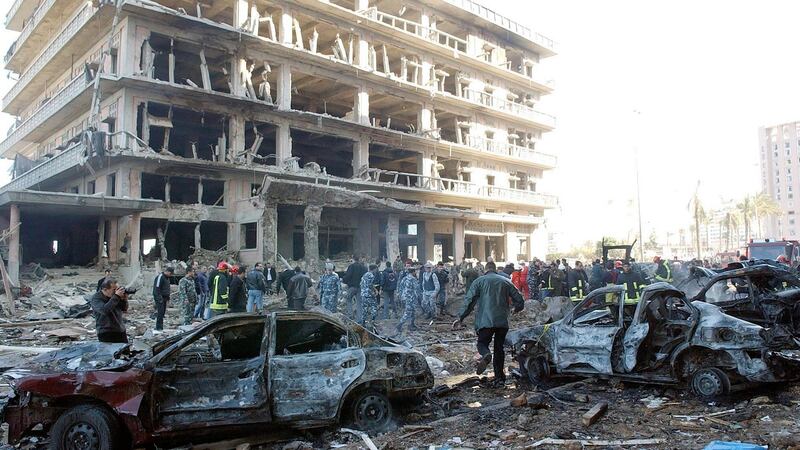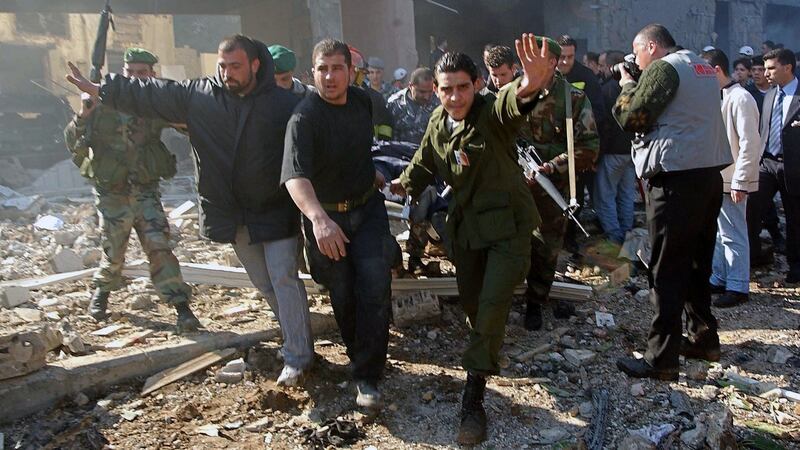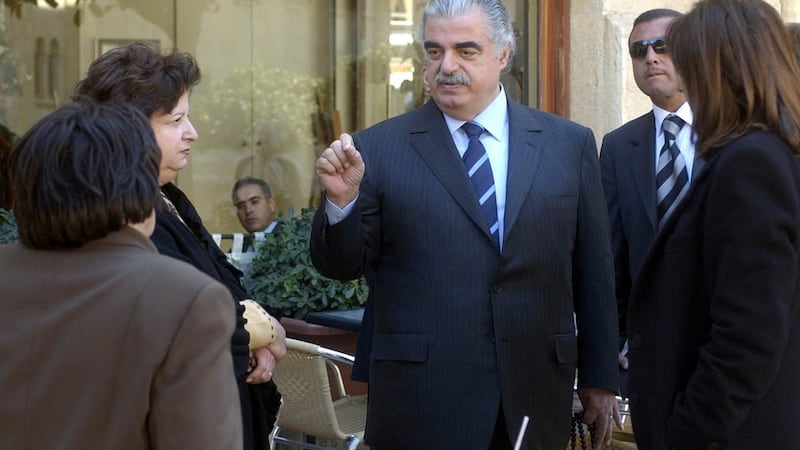It's rarely a good idea to reduce anything complex to bare statistics. And yet, as the judges of the Special Tribunal for Lebanon took turns to read their 4½-hour verdict in the Hariri assassination trial last week, one inevitably began to wonder: What was the point?
The short answer, of course, is that Lebanon deserves to know who was behind the minutely planned and perfectly executed 2005 killing of its former premier, Rafik Hariri, a billionaire businessman whose patience with Syrian interference in his country was rapidly running out.
That’s undoubtedly true: in an increasingly hostile and unaccountable world, nobody doubts the value of demonstrating in court that impunity for their actions cannot not be taken for granted by those who favour thuggery over the rule of law.

Despite the enormity of the crime – 22 dead and 226 injured – the crime scene was not preserved
It's equally true, however, that the shortcomings of the Lebanon tribunal are a cautionary tale for international justice – and particularly timely for the International Criminal Court (ICC), currently electing a new prosecutor and embarking on a programme of much-needed internal reform.
Why? Well, my lasting impression of the judgment in the case of Ayyash et al – on the verge of becoming the world’s first billion-dollar court case – is one of extraordinary naivete. The unadorned facts underscored that naivete at every turn.
Whether or not they were involved in his murder, the problem for Syria and its puppet Lebanese militia, Hizbullah, was that Hariri, who’d been instrumental in ending the Lebanese civil war and who was then rebuilding the heart of Beirut, was expected to win a third term as PM.
Security detail
His killers had been tracking him since at least October 2004, according to mobile phone data. They knew his security detail had the technology to jam remotely detonated bombs, so they chose a van driven by a suicide bomber to detonate the RDX explosive up close – blowing his motorcade to smithereens in a never-to-be-forgotten Valentine’s Day show of strength to the entire Middle East.
Despite the enormity of the crime – 22 dead and 226 injured – the crime scene was not preserved. The mangled vehicles were removed immediately by heavy trucks that drove all over it, destroying crucial forensic evidence. From then on, there was “no proper co-ordination of the investigation”.
Such lack of care, said Judge Janet Nosworthy, the trial judges found “incomprehensible”.
By contrast, to anyone schooled in the ways of conflict, this lack of investigative rigour in the immediate aftermath, not to mention the scale and thoroughness of the targeting beforehand, spoke volumes about the resources, expertise and confidence of the attackers.
So, after a court case that lasted 11 years, the judges told the world last week what it already knew: that there had been a conspiracy to kill Rafik Hariri.
That conspiracy had been “designed to destabilise Lebanon”. It was unclear who was behind that conspiracy. It was unclear how many were involved. It was unclear who sourced the explosives. The conspirators did, they reasoned, include the suicide bomber because he triggered the bomb.
As to those behind the killing, the judges decided that while they may have had motives to eliminate Hariri, the conspiracy did not involve the leadership of Hizbullah and there was “no direct evidence” of Syrian involvement.

Despite this lack of involvement by Hizbullah, the only person convicted, Salim Ayyash, was a Hizbullah member, and the three acquitted for lack of evidence were also allegedly Hizbullah members. All four were tried in absentia.
Commander
A fifth defendant, Mustafa Badreddine, who went on to become a senior Hizbullah commander, was removed from the case after being killed in shelling near Damascus in 2016.
As to the big question for the Lebanese people of who masterminded the assassination of Rafik Hariri, that remains, as the court might have put it, unclear.
Do the statistics for the UN-backed Special Tribunal for Lebanon make that picture look any better? Unfortunately not.
The case was expected to take three years; instead it’s 11 and counting. The UN put its estimated cost at $120 million; instead it has cost more than $800 million and may yet become “the world’s first billion-dollar court case”. Indictments: 5. Defendants in the dock: 0. Convicted: 1 (who may yet appeal). Judges: 12 fulltime. Judgment: 2,600 pages.
Not for the first time, it underlines the shocking gap between its laudable aims and its capacity to deliver
“We were part of the make-believe intended to givethe entire exercise an air of respectability”, says Swiss law professor Guénaël Mettraux, who was co-counsel for a period for one of the three acquitted, and found the whole idea of trial in absentia deeply flawed.

What does all this say about international justice – or, perhaps more accurately, about internationally funded justice?
Not for the first time, it underlines the shocking gap between its laudable aims and its capacity to deliver, a black hole in terms of senior legal management that persistently undermines its credibility and is a gift to its many critics. The Kenyatta case at the ICC comes to mind.
It underlines a shocking unwillingness to see itself as others see it: as hidebound, profligate and inefficient in a post Covid-19 world in which institutional privilege is no longer regarded as high on the list of contributing states’ economic priorities.
But more than either, it is time it got over the idea that it is above and beyond politics. It is not. It is firmly set in a geopolitical ecosystem, not least by its structural links to the UN Security Council. By acknowledging this, fewer issues will be “incomprehensible”.










